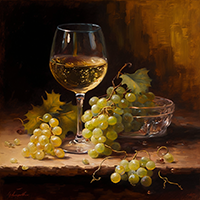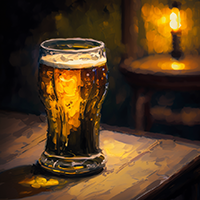Can the Wrong ABV Ruin Homemade Beer and Wine?
Posted by Matteo Lahm on 3rd Dec 2024
Imagine yourself as a tightrope walker, teetering high above the ground, balancing the fine line between alcohol levels and the other characteristics in your homemade beer or wine. It's important to understand the delicate dance between the two and how too much of one often overshadows the other. Achieving harmony will elevate your craft to new heights. Too much or too little alcohol is just falling off the tightrope.

While alcohol content is often seen as an indicator of quality and potency, it is important to recognize that more is not always better. In fact, excessive alcohol can negatively impact the overall flavor profile of your creation if what you are making lacks other elements to properly support it. An Amarone red can go above 16% ABV but, the tannins, oak and heavy fruit forwardness can handle it. A delicate Pinot Noir cannot. Belgian triple, IPA and stout beers typically have higher alcohol levels but they are accompanied by lots of hop bitterness. Other characteristics that can be found in these types of beers are a variety of spices, such as coriander, orange peel, pepper, and licorice, as well as fruity esters, chocolate and coffee notes, and a creamy mouthfeel that also provide balance. What is important is to understand what best suits the style of beer or wine you are making.
Furthermore, a low ABV in a tannic red or an IPA can be just as problematic. There are a lot of potent players in the overall flavor profile. You do not want an astringent wine that is also flabby or a beer with a hop bitterness that kicks you in the back of the throat. In wines with formidable acidity, a higher ABV is definitely the way to go. However, a lower ABV is less problematic as long as it is within a desired range.
It is best to try to stick with a standard ABV profile of whatever it is that you are making. With beer you can control this as you decide how much grain or malt extract goes into your boil. With wine, this can get more complicated. If you are working from grapes, you might want to tailor your plans to accommodate the sugar levels. If your sugars will only reach a 12% ABV, you might want to consider less time on the skins and not adding oak instead of adding sugar to make it stronger. Adding corn sugar changes the fermentation process because it is sucrose. Wine yeasts like fructose and glucose so they have to adapt to a disaccharide and break it down to monosaccharides before converting the sugars to alcohol.
There are even bigger issues associated with attempting a beer or wine with a higher ABV which is why deliberate attempts to increase it can come with an array of problems. The balance between the initial sugar content and the yeast's ability to ferment it sets the final alcohol content of your beverage. However, higher alcohol levels can inhibit the yeast's activity, leading to incomplete fermentation and residual sweetness if you are not using a yeast strain that can ferment to higher alcohol levels. All yeasts have alcohol thresholds and once they hit that limit, they die leading to an undesirable excessive sweetness. If that were not enough to detract from the overall flavor, stressed yeast produces sulfur smells that are very unpleasant.
Your difficulties might not stop there. Alcohol influences the solubility and volatility of various flavor compounds present in beer and wine. While moderate alcohol levels can enhance the perception of certain flavors, an excess can overpower and mask more delicate flavor notes. Additionally, high alcohol content can lead to the extraction of undesirable compounds, such as harsh tannins in wine or excessive bitterness in beer, which can negatively impact the overall flavor profile and sabotage the harmony of your brews. Higher ABV will naturally increase tannin extraction as alcohol is a solvent.

The sensory perception of alcohol is another important factor to consider when evaluating the relationship between alcohol content and flavor. High alcohol levels can create a burning sensation on the palate and in the throat, which can be very distracting when trying to enjoy nuance. Moreover, excessive alcohol can introduce a "heat" to the flavor profile, overshadowing more subtle flavors and creating an unbalanced drinking experience. Conversely, not enough alcohol leaves beer and wine tasting flat like an unseasoned undercooked steak.
In conclusion, it's essential to strike the right balance between alcohol content and flavor when crafting your beer or wine. While it's tempting to chase the high-alcohol dragon, remember that the art of balance is key. Excessive alcohol can sabotage the overall flavor composition, transforming a potentially enjoyable drinking experience into a letdown, like a bad drunk who ruins the party. Let’s face it, you don’t go through all the trouble to make sophisticated beer and wine just to get drunk. You can do that with cheap vodka. You can always just have another glass of something you enjoy if you want a little more buzz. Alcohol has an important role, but it’s not the only star of the show. By skillfully managing the fermentation process and striking the perfect balance between alcohol content and flavor, you can ensure that your homemade beer or wine is a harmonious delight, worthy of a standing ovation.

